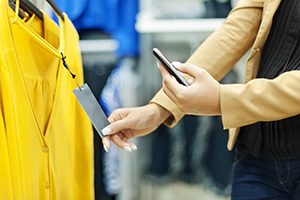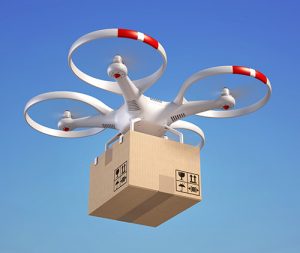 I wrote earlier this year about changing retail habits and the resulting empty malls, or dead malls as they have sometimes been labeled. More people are ordering goods online and having them delivered directly to their home. That is all well and good for batteries or electronics, but how do you shop for clothes and fashion accessories online? How can you tell if something is going to fit or if it will look good on you without going to a store to try it on? What is the future of fashion retail? Will retail clothing stores fold completely, or will they revamp their offerings to stay relevant in the digital age? How will technology play a role in fashion and the shopping experience?
I wrote earlier this year about changing retail habits and the resulting empty malls, or dead malls as they have sometimes been labeled. More people are ordering goods online and having them delivered directly to their home. That is all well and good for batteries or electronics, but how do you shop for clothes and fashion accessories online? How can you tell if something is going to fit or if it will look good on you without going to a store to try it on? What is the future of fashion retail? Will retail clothing stores fold completely, or will they revamp their offerings to stay relevant in the digital age? How will technology play a role in fashion and the shopping experience?
Augmented Reality and Virtual Reality
Pokemon Go introduced us to augmented reality by placing on-screen characters in the physical world. Retail stores such as Nordstrom and Neiman Marcus are working with developers to trade Pokemon characters for clothing and accessories. New technology such as Memory Mirror is being developed to allow someone to try on clothes without actually trying on clothes, at least not repeatedly. Memory Mirror will be a kiosk which looks like a mirror but can be controlled by hand gestures or voice commands and has icons for changing color or size. It can even project accessories such as various belts or handbags. It will connect to social media so shoppers can send pictures of themselves in the new outfit to their friends for a thumbs up or thumbs down. This technology is designed to limit wardrobe changes, which tend to drive customers out of a store. Products such as Zugara’s Virtual Dressing Room has partnered with Microsoft Kinect to create a similar product, but their offering will be available as a web app as well so you can see how online merchandise may look on you before buying. Most of these products are in development but promise a functioning product soon.
In this case, the old department store may turn into a giant dressing room but all of the sales channels will need to be synchronized so a person can buy the clothing while shopping, or order it online via smartphone. From first encounter to purchase, the technology will need to work flawlessly to provide a seamless shopping experience.
Visual Search
Visual search lets you search via an image as opposed to text. With modern smartphones, a shopper can capture an image of an item and search online for the best price for that particular item. This is bad for brick and mortar retailers because it turns their stores into showrooms without sales, especially if the shopper can find the item cheaper on Amazon or Zappos. The retailer is paying to display the merchandise but without the resulting benefits. GPS technology could turn that around for them. If the search engine knew that a customer was standing in Macy’s, for example, it could push the store higher in the search results and possibly offer a coupon for being a loyal customer. In this case, technology would enhance the traditional shopping experience by keeping the customer focused on your store.
Look
The new Amazon Echo Look, which is currently available by invitation only, promises to be your style assistant as well as a hands-free camera. As an extension of the Amazon Echo, you can take hands-free full length photos of yourself with depth perception technology and store those photos for comparison. You can get a second opinion of your outfit by something called Style Check “…a new service that combines machine learning algorithms with advice from fashion specialists.” If I were a retailer I would try to find a way to insert ads to push Alexa to recommend my physical or online stores.
Thoughts
It’s not clear if retail stores will ever regain their preeminent position, but just as fashion trends change, so does the way we interact with these stores. Whether it be online through a computer or smart phone or actually talking with a sales clerk, we have more choices than ever before as to how we buy fashion.
Do you still visit stores to browse or buy clothes or do you purchase strictly online? What would draw you back into a store? Let me know your thoughts.
Kelly Brown is an IT professional and assistant professor of practice for the UO Applied Information Management Master’s Degree Program. He writes about IT and business topics that keep him up at night.



